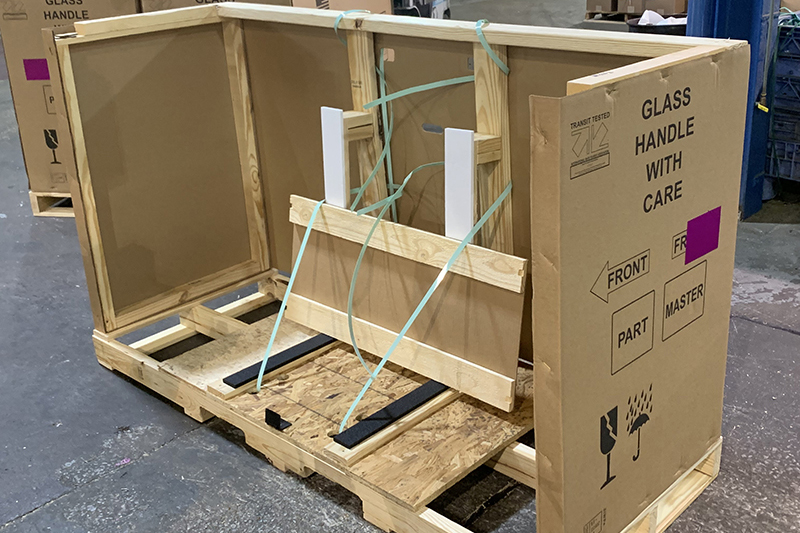Bulk Container Recycling Initiatives: Sustainably Browsing Market
Reliable Industrial Recycling Solutions for Sustainable Packaging: A Comprehensive Guide
In today's significantly environmentally-conscious globe, the demand for lasting product packaging options has never been higher. To fulfill this demand, services across industries are proactively seeking efficient industrial recycling options. Browsing the facility landscape of sustainable packaging can be testing without an extensive guide. That's where this comprehensive guide on effective industrial recycling solutions for lasting product packaging comes in. By discovering crucial areas such as product packaging material choice, designing for recyclability, executing recycling facilities, collaborating with recycling partners, and monitoring and determining reusing success, this overview will furnish you with the expertise and tools needed to make educated decisions and drive positive adjustment within your organization. Whether you're a product packaging specialist, sustainability manager, or simply curious about the subject, this guide will supply beneficial insights and methods to aid you browse the globe of lasting product packaging.
Packaging Material Choice
The choice of packaging materials plays a crucial role in making sure the sustainability of industrial reusing services. When it involves sustainable product packaging, the option of products is type in minimizing ecological influence and making the most of reusing performance. Choosing the appropriate products can help in reducing waste generation, conserve resources, and advertise a circular economic climate.
One essential element to consider in packaging material choice is recyclability - bulk container recycling. Materials that can be conveniently reused and included back into the production cycle are liked. Products like cardboard, paper, glass, and specific types of plastics can be reused multiple times without losing their quality. On the other hand, products that are challenging to reuse, such as non-recyclable compounds or mixed plastics, can produce challenges for the recycling process and may end up in land fills or burners.
Another consideration is using sustainable and eco-friendly materials. Packaging made from sustainable sources, such as plant-based plastics or biopolymers, can assist decrease dependency on fossil fuels and mitigate climate change. Furthermore, naturally degradable products damage down naturally gradually, decreasing the buildup of waste in land fills.
Furthermore, the weight and volume of product packaging materials must be reduced to minimize transportation expenses and energy usage. Light-weight products not only require fewer resources during production but likewise add to reduce carbon emissions throughout transportation.
Creating for Recyclability
Product packaging designers should focus on the usage of materials that are extensively accepted for recycling and have developed reusing infrastructures. Materials such as glass, aluminum, and certain kinds of plastic, like Family pet and HDPE, are commonly reused and must be chosen over materials that are costly or difficult to reuse.
One more important consideration in designing for recyclability is the removal of unnecessary components or products. By lessening the variety of layers, coverings, and added elements, product packaging can be made less complex and much easier to reuse. Furthermore, designers must intend to decrease making use of blended products, as they can complicate the reusing process.

Implementing Recycling Facilities
Effective application of reusing infrastructure is important for the success of commercial recycling remedies. Without appropriate facilities in place, the recycling procedure becomes inefficient and inefficient, preventing the overall goal of lasting product packaging.
To carry out reusing facilities effectively, several crucial factors need to be thought about. There should be a well-organized collection system that assists in the splitting up and collection of recyclable materials. This can consist of designated reusing containers in public spaces, along with collaborations with waste administration firms for curbside pickup and sorting.
When accumulated, the recyclable materials need to be delivered to discover this recycling centers in a prompt way. This calls for efficient logistics and transportation networks, making certain that the products reach the suitable centers immediately.
At the reusing centers, progressed sorting and handling technologies should be in location to divide different sorts of materials successfully. This consists of making use of automated arranging devices, optical scanners, and hands-on sorting methods.
Moreover, there should be a robust market need for recycled products. This can be attained via cooperations with suppliers and sectors that utilize recycled products in their manufacturing processes. Producing a secure market for recycled products incentivizes the reusing market and promotes the round economic climate.
Collaborating With Recycling Partners

One secret aspect of working together with recycling companions is the establishment of clear interaction networks. It is necessary to establish open lines of communication to assist in the exchange of details, updates, and feedback. This permits both parties to stay educated concerning the progress of recycling efforts and attend to any type of challenges or problems that might occur.
In addition, partnership can involve joint initiatives in making and implementing recycling programs. Recycling partners can give beneficial insights and assistance in developing effective collection systems and figuring out one of the most appropriate recycling technologies. By interacting, organizations and reusing partners can optimize the reusing process and minimize waste.
Moreover, collaboration can expand past the operational elements of recycling. It can also incorporate advocacy and education initiatives. By joining forces, organizations and recycling partners can elevate recognition concerning the relevance of recycling and advertise the adoption of sustainable packaging practices among customers and various other stakeholders.
Monitoring and Measuring Recycling Success
To make certain the effectiveness of commercial recycling services and the achievement of lasting packaging goals, it is critical for businesses and their recycling companions to establish an extensive system for tracking and gauging reusing success (bulk container recycling). Tracking and measuring recycling success enables companies to analyze the influence of their recycling initiatives, determine locations for renovation, and set meaningful targets for future progress
One method to track reusing success is with making use of information collection and analysis devices. By gathering information on the amount of packaging waste produced, the percentage of waste that is recycled, and the sorts of materials being recycled, organizations can acquire important insights right into their recycling performance. This data can after that be analyzed to determine fads, patterns, and areas of inadequacy.
An additional important aspect of tracking and measuring recycling success is establishing his response standard and clear metrics. This permits organizations to contrast their performance versus sector standards and track their progression in time. Metrics such as reusing prices, waste diversion prices, and greenhouse gas emissions can supply a measurable procedure of an organization's reusing success.

Conclusion
In final thought, implementing efficient industrial recycling options for lasting packaging requires cautious consideration of packaging have a peek at these guys material choice, developing for recyclability, executing recycling infrastructure, collaborating with recycling companions, and monitoring and determining reusing success. By including these practices, organizations can contribute to a much more lasting and environmentally-friendly approach to packaging, minimizing waste and advertising the round economy.
By discovering essential locations such as packaging material option, developing for recyclability, carrying out recycling infrastructure, teaming up with reusing partners, and tracking and determining recycling success, this overview will certainly equip you with the understanding and devices essential to make educated decisions and drive favorable change within your organization. Product packaging developers should prioritize the usage of products that are extensively accepted for recycling and have developed recycling infrastructures.Partnership with recycling companions is crucial for the effective application of commercial reusing options and the success of sustainable product packaging goals. By joining pressures, businesses and recycling partners can elevate awareness regarding the value of recycling and promote the adoption of lasting packaging techniques among customers and various other stakeholders.
By accumulating data on the amount of product packaging waste generated, the portion of waste that is recycled, and the types of materials being reused, businesses can obtain important understandings into their reusing efficiency.